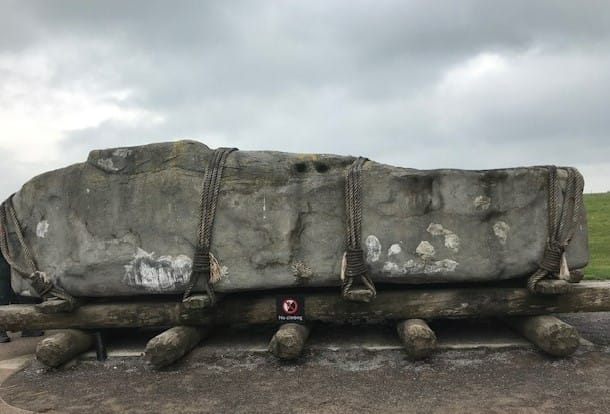Visiting Stonehenge is an unforgettable experience. Its like stepping 5,000 years back in time. This iconic UNESCO World Heritage site and ancient wonder of the world is the best known prehistoric monument in Europe.

It’s also a place that sparks many questions. What was it’s purpose and origin? Tourists from all around the world come searching for answers and to experience it’s unique atmosphere.
Here is a snapshot of what to see, common theories and how to access the site.
The Stone Circle
The main attraction and centrepiece of Stonehenge is the Stone Circle. The Stone Circle consists of a circular array of standing stones. A common monument layout in the Late Neolithic and Early Bronze Age eras (approx. 3500 – 3000 BCE) especially across Northern Europe and Great Britain.



The importance of the circular formation of vertical stones has been widely debated. Are they of astronomical significance, used as a place of ceremonial ritual or for burial?
Many theories exist which only adds to the mystique of Stonehenge. There are stones in the circle where you can see the solstice alignment. Aligned in the direction of sunrise in the summer solstice and of sunset in the winter solstice.
Key parts of the Stone Circle are:
- The Stonehenge Avenue
- Arrow showing solstice alignment
- Heel Stone
- Stone hole marker
- Slaughter Stone
- Station Stones
- Station Stone markers
- Sarsen Stones
- Bluestones
- Horseshoe of Sarsen Trilithons
- Aubrey Hole markers
- Bank and ditch
The construction is pure masterpiece. Without conventional tools and technologies that exist today, the engineering of the time is remarkable. Stages of building include; quarrying, transportation of stone, laying foundations and the final construction.

Unfortunately, you’re unable to enter the inner circle in normal visiting hours to protect it from heavy tourist traffic. You can however arrange a Special Access or Inner Circle tour usually happening at dusk or dawn.
How to get there:
Stonehenge: located on Salisbury Plain in Wiltshire about 90 miles (145 kilometres) west of London, a number of tour companies can get you there.
The Stone Circle: walk (takes 20 minutes of brisk walking) from Stonehenge entrance or jump on a shuttle bus (5 minutes) to reach the Stone Circle.
Don’t wait to get cheap flights to London! Book now with Trip.com here
Neolithic houses
The Neolithic houses are a reconstruction of the remains of similar homes found one mile north east of Stonehenge in 2006-2007.
These homes give us an insight into the lives of the prehistoric people of Stonehenge.



The homes consisted of a single room measuring 5 metres on each side with white chalk walls and floors. These were designed to reflect the sunlight in summer and capture heat from a fire in winter. The thatched and woven roof effectively filtered the smoke. All furniture inside the homes was either wooden or woven.
How to get there: The Neolithic Houses are located outside the Stonehenge Visitors Centre near tourist bus parking bay.
Did you know the average weight of some stones at Stonehenge is 25 tonne? Here is one. Amazing!

Its hard not to be drawn in by Stonehenge’s mysterious aura and be intrigued by this sacred site.
It’s one tourist attraction you won’t want to miss!
Don’t wait to get a cheap tour to Stonehenge! Book now here
Suggested post: 5 best theme tours and attractions in London
Is a visit to Stonehenge on your travel bucket list? Comment below 
This page contains affiliate links.
Linda is an Amazon author, writer and travel blogger. Her website The Smart Travelista offers travel resources and tips via her blog, books, videos and more.
Discover more from The Smart Travelista
Subscribe to get the latest posts sent to your email.
